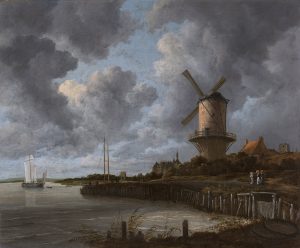Introduction to the Dutch Republic
In 1581 the six northern provinces of the Netherlands declared their independence from Spain. While the cultural links with Flanders remained strong, several factors encouraged the quick development of Dutch artistic traditions. Unlike Flanders, where all artistic activity radiated from Antwerp, the Dutch Republic had a number of local schools of painting. Besides Amsterdam, the commercial capital, there were important artists in Haarlem, Utrecht, Leyden, Delft, and other towns.
The new nation was one of merchants, farmers, and seafarers, and its religion, Reformed protestant, was iconoclastic. Hence Dutch artists rarely had the large-scale Church and State commissions that were available throughout the Catholic world.[1]

The Dutch delighted in depictions of themselves and their country – the landscape, cities, and domestic life – not to mention beautiful and interesting objects to be seen in still-life paintings and interior scenes. A well-educated people, the Dutch were also fascinated by history, mythology, the Bible, and new scientific discoveries, commercial expansion abroad, and colonial exploration.
Visitors to the Netherlands in the seventeenth century noted the popularity of art among merchants and working people. Peter Mundy, an English traveler, wrote in 1640 that even butchers, bakers, shoemakers, and blacksmiths had pictures in their houses and shops. This taste for art stimulated a free market for paintings that functioned like other commodity markets. Artists had to compete to capture the interest of the public by painting on speculation. Specialists in particularly popular types of images were most likely to be financially successful, and what most Dutch patrons wanted were paintings of themselves, their country, their homes, their possessions, and the life around them.[2]

